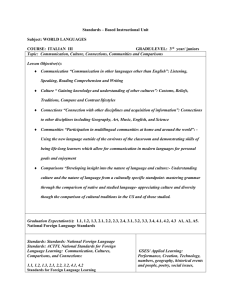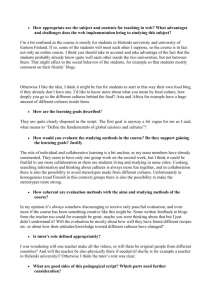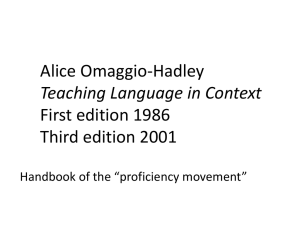Foreign Language Education Standards & Student Profile
advertisement
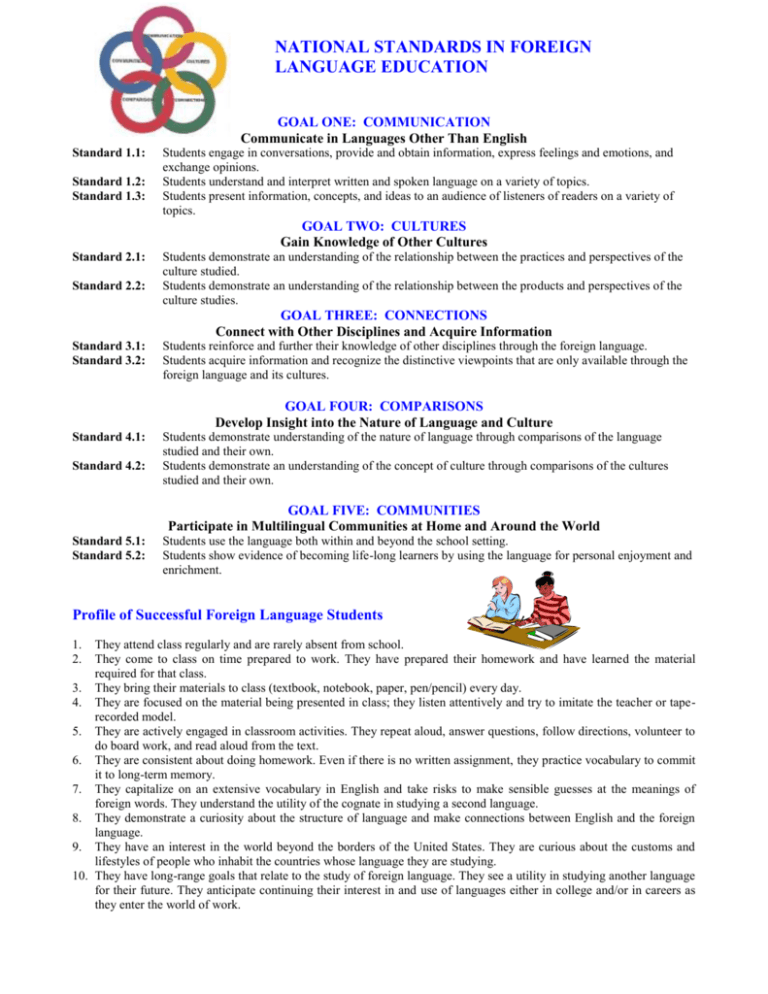
NATIONAL STANDARDS IN FOREIGN LANGUAGE EDUCATION GOAL ONE: COMMUNICATION Communicate in Languages Other Than English Standard 1.1: Standard 1.2: Standard 1.3: Students engage in conversations, provide and obtain information, express feelings and emotions, and exchange opinions. Students understand and interpret written and spoken language on a variety of topics. Students present information, concepts, and ideas to an audience of listeners of readers on a variety of topics. GOAL TWO: CULTURES Gain Knowledge of Other Cultures Standard 2.1: Standard 2.2: Students demonstrate an understanding of the relationship between the practices and perspectives of the culture studied. Students demonstrate an understanding of the relationship between the products and perspectives of the culture studies. GOAL THREE: CONNECTIONS Connect with Other Disciplines and Acquire Information Standard 3.1: Standard 3.2: Students reinforce and further their knowledge of other disciplines through the foreign language. Students acquire information and recognize the distinctive viewpoints that are only available through the foreign language and its cultures. GOAL FOUR: COMPARISONS Develop Insight into the Nature of Language and Culture Standard 4.1: Standard 4.2: Students demonstrate understanding of the nature of language through comparisons of the language studied and their own. Students demonstrate an understanding of the concept of culture through comparisons of the cultures studied and their own. GOAL FIVE: COMMUNITIES Participate in Multilingual Communities at Home and Around the World Standard 5.1: Standard 5.2: Students use the language both within and beyond the school setting. Students show evidence of becoming life-long learners by using the language for personal enjoyment and enrichment. Profile of Successful Foreign Language Students 1. 2. They attend class regularly and are rarely absent from school. They come to class on time prepared to work. They have prepared their homework and have learned the material required for that class. 3. They bring their materials to class (textbook, notebook, paper, pen/pencil) every day. 4. They are focused on the material being presented in class; they listen attentively and try to imitate the teacher or taperecorded model. 5. They are actively engaged in classroom activities. They repeat aloud, answer questions, follow directions, volunteer to do board work, and read aloud from the text. 6. They are consistent about doing homework. Even if there is no written assignment, they practice vocabulary to commit it to long-term memory. 7. They capitalize on an extensive vocabulary in English and take risks to make sensible guesses at the meanings of foreign words. They understand the utility of the cognate in studying a second language. 8. They demonstrate a curiosity about the structure of language and make connections between English and the foreign language. 9. They have an interest in the world beyond the borders of the United States. They are curious about the customs and lifestyles of people who inhabit the countries whose language they are studying. 10. They have long-range goals that relate to the study of foreign language. They see a utility in studying another language for their future. They anticipate continuing their interest in and use of languages either in college and/or in careers as they enter the world of work.
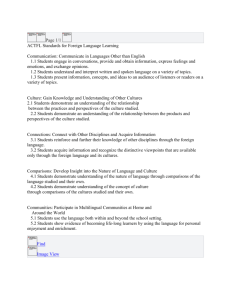
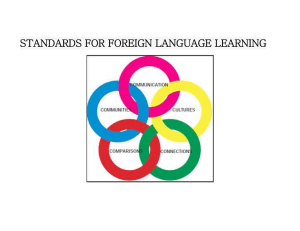
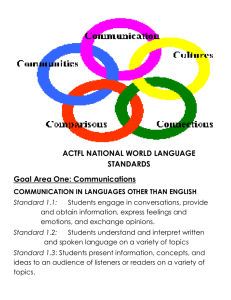
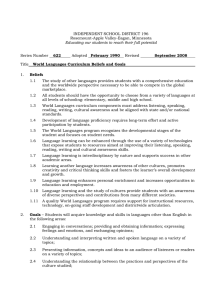
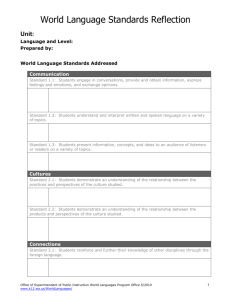

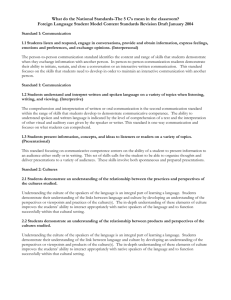
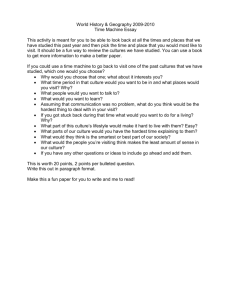
![Spanish I TEKS provide and obtain information.[1.A]](http://s2.studylib.net/store/data/015573164_1-84ce21ffed7430f5accef7e218a0e844-300x300.png)
